
Juan García Esquivel, often known mononymously as Esquivel!, was a Mexican band leader, pianist, and composer for television and films. He is recognized today as one of the foremost exponents of a sophisticated style of largely instrumental music that combines elements of lounge music and jazz with Latin flavors. Esquivel is sometimes called "The King of Space Age Pop" and "The Busby Berkeley of Cocktail Music", and is considered one of the foremost exponents of a style of late 1950s-early 1960s quirky instrumental pop that became known as "Space Age Bachelor Pad Music".
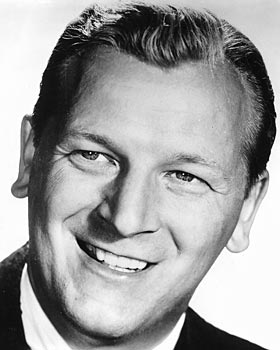
Leslie Thompson Baxter was an American musician, composer and conductor. After working as an arranger and composer for swing bands, he developed his own style of easy listening music, known as exotica and scored over 250 radio, television and motion pictures numbers.
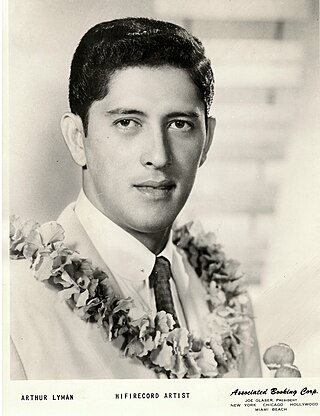
Arthur Hunt Lyman was a Hawaiian jazz vibraphone and marimba player. His group popularized a style of faux-Polynesian music during the 1950s and 1960s which later became known as exotica. His albums became favorite stereo-effect demonstration discs during the early days of the stereophonic LP album for their elaborate and colorful percussion, deep bass and 3-dimensional recording soundstage. Lyman was known as "the King of Lounge music."
Exotica is a musical genre, named after the 1957 Martin Denny album of the same name that was popular during the 1950s to mid-1960s with Americans who came of age during World War II. The term was coined by Simon "Si" Waronker, Liberty Records co-founder and board chairman. The musical colloquialism exotica means tropical ersatz, the non-native, pseudo experience of insular Oceania, Southeast Asia, Hawaii, the Amazon basin, the Andes, the Caribbean and tribal Africa. Denny described the musical style as "a combination of the South Pacific and the Orient...what a lot of people imagined the islands to be like...it's pure fantasy though." While the South Seas forms the core region, exotica reflects the "musical impressions" of every place from standard travel destinations to the mythical "shangri-las" dreamt of by armchair safari-ers.
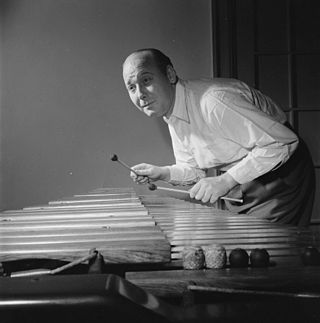
Red Norvo was an American musician, one of jazz's early vibraphonists, known as "Mr. Swing". He helped establish the xylophone, marimba, and vibraphone as jazz instruments. His recordings included "Dance of the Octopus", "Bughouse", "Knockin' on Wood", "Congo Blues", and "Hole in the Wall".

Frank Rosolino was an American jazz trombonist.

Pete Candoli was an American jazz trumpeter. He played with the big bands of Woody Herman and Stan Kenton and worked in the studios of the recording and television industries.

George Mortimer Roberts was an American trombonist.
Anthony C. "Tony" Mottola was an American jazz guitarist who released dozens of solo albums. Mottola was born in Kearny, New Jersey and died in Denville.
Space age pop or bachelor pad music is a subgenre of easy listening or lounge music associated with American and Mexican composers, songwriters, and bandleaders in the Space Age of the 1950s and 1960s. It drew on contemporary fascination with technology, outer space, and "exotic" locations, exploiting new audio technology such as stereophonic sound, multitrack recording, and early electronic instruments. Irwin Chusid identifies the heyday of the genre as "roughly 1954 to 1963—from the dawn of high-fidelity (hi-fi) to the arrival of the Beatles." Major artists in the genre include Juan García Esquivel, Les Baxter, Enoch Light, Henry Mancini, Dick Hyman, and Jean-Jacques Perrey.
Donald Alton Fagerquist was a small group, big band, and studio jazz trumpet player from the West Coast of the United States.
James "Osie" Johnson was a jazz drummer, arranger and singer.
Martin Gold was an American composer, pianist, and bandleader born in New York City, New York, United States. He was the pianist and arranger for the Korn Kobblers, a popular 1940s novelty group billed as "America's most nonsensical dance band", but was probably best known as the composer of the song "Tell Me Why", which was a hit for The Four Aces in 1951.

Milt Bernhart was a West Coast jazz trombonist who worked with Stan Kenton, Frank Sinatra, and others. He supplied the solo in the middle of Sinatra's 1956 recording of I've Got You Under My Skin conducted by Nelson Riddle.
Joe Mondragon was an American jazz bassist.

Alfred Viola was an American jazz guitarist who worked with Frank Sinatra for 25 years. He played the mandolin on the soundtrack of the film The Godfather.
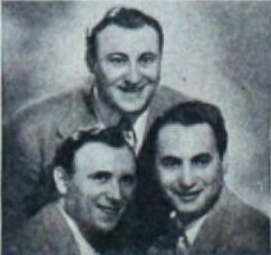
The Three Suns were an American pop group, most popular during the 1940s and 1950s.
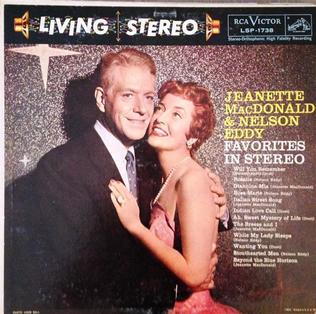
Favorites in Stereo is a studio album by Jeanette MacDonald and Nelson Eddy. The album was recorded in stereo and released by RCA Records in 1959. For its monaural release the title was changed to Favorites in Hi-Fi. The album peaked at number 40 on the Billboard 200 chart. It was certified Gold by the Recording Industry Association of America on October 27, 1966.
Philip L. Bodner was an American jazz clarinetist and studio musician who also played flute, oboe, saxophone, and English horn.











